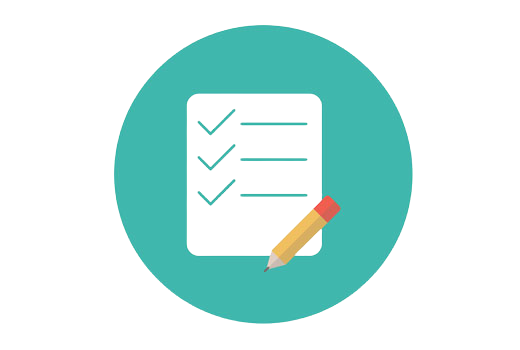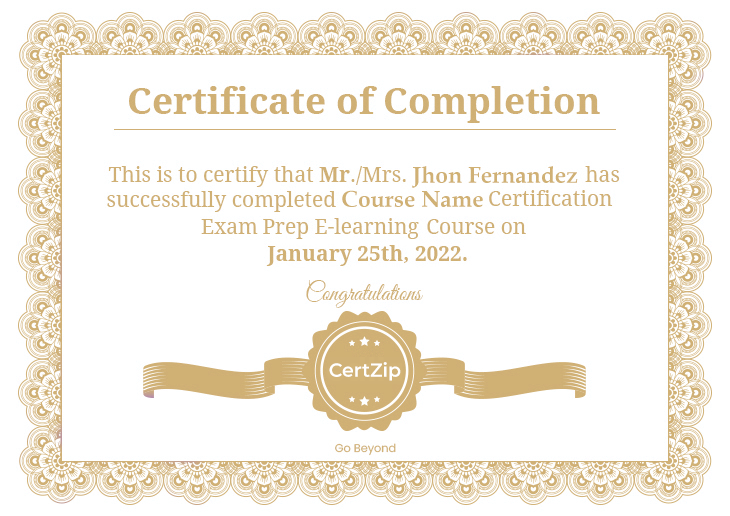Your Shopping Cart

With this course, You will be able to implement advanced networking configurations, plan authentication and security of the infrastructure, and use PaaS solutions and Storage Services to deploy end-to-end cloud solutions.
Microsoft Azure Master Program for Azure cloud engineer certification will qualify you for three certification exams: AZ-104, which is needed to attain Azure Administrator Badge (Associate-level), AZ-204, which is necessary to achieve Azure Developer Badge (Associate-level), AZ-303, which is required to attain Azure Solutions Architect Badge (Expert-level), and AZ-400, which is essential for attaining Azure DevOps Engineer Badge (Expert-level).
Master Azure Program is a structured education path suggested by leading industry experts. It makes you proficient in new-age technologies that give your career a much-needed boost.
While the Microsoft Azure Cloud Engineer Certification Masters Program is designed for professionals planning to attain any or all of the four badges – Azure Administrator Associate Badge, Azure Developer – Associate Badge, Azure Architect Expert, and DevOps Engineer Badge.
There are no prerequisites for registration in this Microsoft Azure Masters Program. A basic understanding of cloud computing concepts and Linux will help.
Professionals plan to attain any or all of the four badges – Azure Administrator Associate Badge, Azure Developer – Associate Badge, Azure Architect Expert Badge, and DevOps Engineer Badge.
Azure Cloud Engineers are accountable for many cloud-related activities, including Evaluating an organization's IT infrastructure to determine opportunities for advancing to the Cloud, Overseeing the migration process and maintaining the new system, Performing configuration management and disaster recovery tasks, Deploying Azure.
Create and control systems, databases, and networks for the Cloud utilizing Microsoft's Azure platform.
This vast infrastructure network is why most Fortune 500 companies trust Azure. As more businesses flock to Microsoft Azure, demand for skilled cloud professionals will increase.
Azure facilitates easy mobility and a reliable, consistent platform between on-premise and public Cloud. Azure delivers a more comprehensive range of hybrid connections, including virtual private networks (VPNs), caches, content delivery networks (CDNs), and ExpressRoute connections, to enhance usability and performance.
Fundamentals of Cloud Computing Self paced course
learn about the administrative tools and components that make up an Azure subscription, the different available types of subscriptions, and the various services Azure provides. Azure Resource Manager and how resources are classified into resource groups.
Learn Azure virtual networking concepts, how you create and configure them, and how system routes, routing tables, and routing algorithms are used. Azure DNS basics and Network Security Groups (NSGs). Learn to implement NSGs considering service endpoints and policies.
Learn Azure VMs, their supporting OS, sizing, and pricing, and create and configure Windows and Linux VMs in Azure. Learn to create custom VMs in Azure. You will also know how VMs can be extended through custom scripts and Desired State Configuration.
learn about storage accounts – Standard and Premium – and storage endpoints, data replication and work with Azure Storage Explorer to manage storage data, discover how a shared access signature (SAS) provides delegated Access to resources. Understand disks and storage - Azure Blob Storage, Azure Files, and structured storage types like Table and Queue storage.
know how to use Azure backup as a data protection solution and work with Azure File Sync, how to use Azure CDN and transfer data to and from the Cloud using the Import/Export service and Data Box.
discover the two main configuration areas for VMs: Networking and Storage; how to keep your VMs highly available sets, and use scale sets to increase/decrease the number of VMs, backing up and restoring VMs.
Learn how traffic is distributed in a virtual network: Azure Load Balancer, Azure Traffic Manager, and Azure Application Gateway, two specific types of inter-site Connectivity: VNet-to-VNet connections and VNet Peering; choose which connectivity method and how to implement and configure that method.
learns how to integrate an on-premises network with Azure Virtual Network. Implement Point-to-Site VPN Connections and ExpressRoute to connect your virtual networks, essential skills around troubleshooting common network issues with the help of the Azure Network Watcher tool.
discover Azure Monitor and its many capabilities to ensure your Azure architecture is functioning correctly. The Log Analytics tool provides a way for you to analyze and query all types of corresponding data; the basics of Role-Based Access Control apply to users and groups.
Intro to the Azure Active Directory and the fundamentals of implementing Azure AD objects, things have domains and tenants, users and groups, roles, and devices. Practice configuring these objects through the portal and Azure PowerShell in each lesson.
know how to integrate Active Directory with your existing infrastructure. Different authentication options such as Single Sign-on and Pass-through authentication, learn how to configure Azure AD Application Proxy. MFA and its work. Lastly, you will discover how to use conditional access policies.
Know Microsoft Azure and its Infrastructure as a Service(IaaS) Compute Solutions. Plan VM deployment and make VMs utilizing Azure Portal, PowerShell, and C# code.
Discover how to use ARM templates for repeatable deployments and encrypt Azure VM disks. Use Azure Batch, which develops and manages a pool of compute nodes (VMs), installs the applications you want to run, and schedules jobs to run on the nodes.
Create and operate modern, portable, Microservices-based applications that benefit from Kubernetes orchestration and control the availability of those application components.
Get an introduction to Use Azure App Service Web Apps for hosting web applications, REST APIs, and mobile back ends. Add more power to the application by executing security, load balancing, Autoscaling, and automated management. Create engaging cross-platform and native apps utilizing Azure App Service Mobile Apps.
Learn how to develop and document an Azure App Service API and implement Azure Functions, a solution for efficiently running small pieces of code, or "functions," in the Cloud.
Utilize Azure Table storage service that stores structured NoSQL data in the Cloud, providing a key/attribute store with a schema-less design. Also, learn how to use Azure Cosmos DB storage to manage containers and items, handle documents using code, and implement scaling.
Learn about Azure SQL Database, a managed service that is a general-purpose relational database that supports relational data, JSON, spatial, and XML structures. Know about Azure Blob storage, Microsoft's object storage solution for the Cloud.
Learn about the Microsoft identity platform, an evolution of the Azure Active Directory (Azure AD) identity service and developer platform. It allows developers to build applications that sign in all Microsoft identities and get tokens to call Microsoft Graph, other Microsoft APIs, or developers' APIs.
learn how to leverage Azure Cache for Redis and Azure CDNs to deliver assets to users quickly.
Learn to add code to your app to send the data to Azure Monitor, the central service that includes all the tools you need to monitor and optimize your solution.
Get an overview of Logic Apps and API Management. Learn how to integrate Azure Search (Search-as-a-Service).
Create event-based solutions in Azure by integrating Azure Event Grid, Event Hubs, and Notification Hubs in your applications, Microsoft Azure Service Bus, a fully managed enterprise integration message broker.
learn about making a Free Tier Azure Account, accessing Azure Services via Azure Portal and Azure Storage Service. Knowledge of ARM Templates and learn to utilize them for deploying Azure resources.
learn to deploy and manage Azure Virtual Machines. Build and deploy an Azure Storage account, Azure Blobs, Azure Managed Disks, Virtual Networks, and related concepts like NIC, NSG, Subnets, etc.
learn about Azure Availability Sets and their features, know about various Availability Zones and Virtual Machine Scale Sets, Azure Load Balancer, and Azure Application Gateway.
understand the basics of statistics, different measures and probability distributions, and the supporting libraries in these operations.
comprehend aspects like Deploying and Managing Web Apps, App Service Security, and Azure App Service Plan. Discover to create, deploy and configure Function App and Logic App.
discover the Azure Hybrid Connectivity and its related concepts. Execute VNet Peering, P2S, and S2S Connectivity.
know the aspects such as Azure Architecture Center, Cloud design patterns, competing consumers pattern, Cache-aside Pattern.
understand Azure Service Fabric as a distributed systems platform that makes it easy to package, deploy, and manage scalable and reliable microservices and containers.
learn Access Control and RBAC. Implement authentication and authorization in applications. Conceptualize data security using End-to-end encryption, Azure confidential computing, Azure Key Vault, SSL, and TLS communications.
know to configure a message-based integration architecture, develop a methodology for Asynchronous Processing, and build apps for Autoscaling.
earn about Monitoring Azure Services. You will learn about Azure alerts and metrics services. You will also get an overview of Azure Log Analytics, App Insights service, Azure Activity Log, and Azure Service Health.
explore different security and storage design aspects like Authentication and Authorization principles, licensing, compliance, PIM, storage accounts, etc
examine and present design strategies for Data Migration and Azure services for Migration
discover and investigate different design approaches to minimize costs for other resources like compute, storage, network, etc
explore Site recovery, replication, backup, etc
understand the essential aspects of Azure and DevOps, planning, and source code management in DevOps.
Design and execute a Build Strategy for your Azure Pipeline to implement continuous integration.
Build and deploy a multi-container application on an AKS Cluster. Use Azure Container and container registry services.
Manage artifact versioning and operate WhiteSource to manage secure open-source softwares and licenses.
Configure a CI/CD pipeline utilizing YAML and handle your secrets using Azure Vault, configure Azure Monitor as a part of the Release Deployment and create a release dashboard to collect and share information.
Configure IaaS and PaaS services on Azure. deploy a containerized docker application on Azure Web Apps utilizing the Container registry.
learn to deploy and configure Azure DevOps dashboards and utilize Application Insights to monitor application performance, integrate Azure DevOps with Teams.
know to create a Terraform Project using the Microsoft Demo generator to automate the infrastructure. Use ARM templates to demonstrate Infrastructure as Code (IaC).
discover to manage and check the code quality with SonarCloud on Azure DevOps, integrate Azure Key Vault with Azure DevOps to access secrets in Azure Pipeline.
This Azure DevOps expert certification module will tell about the Microsoft Certified: DevOps Engineer Expert Exam, learn how Azure DevOps has helped real-world organizations optimize development and deliver faster through various case studies.
The average salary for an MS Azure Cloud Engineer is $131,409 per year
Flexible Career. Attractive Salary Package. Fast Learning Process. Lower IT Costs. Improved Security Standards. Proof of Commitment. Enterprise Agreement Support. Professional Development.
To better understand the MS Azure Cloud Engineer Masters Program Certification Training, one must learn as per the curriculum.
Microsoft Azure certification exams are pretty challenging to achieve but not impossible. Moreover, it would be best to have determination and confidence, essential to ace Azure certification.
It's also a global solution. With more than 40 data centers worldwide, Azure allows you to back up data in more than one place. This diversifies risk and gives you speed, customer service, and compliance options when geography matters.
Database skills. Programming. Networking. DevOps. Containerization. Virtualization. Understanding of cloud providers.
By enrolling in the MS Azure Cloud Engineer Masters Program Training and completing the Module, you can get the CertZip MS Azure Cloud Engineer Masters Program Certification.


Every certification training session is followed by a quiz to assess your course learning.

The Mock Tests Are Arranged To Help You Prepare For The Certification Examination.

A lifetime access to LMS is provided where presentations, quizzes, installation guides & class recordings are available.

A 24x7 online support team is available to resolve all your technical queries, through a ticket-based tracking system.

For our learners, we have a community forum that further facilitates learning through peer interaction and knowledge sharing.

Successfully complete your final course project and CertZip will provide you with a completion certification.
An MS Azure Cloud Engineer Masters Program Training is a certification that demonstrates that the holder has the proficiency and aptitudes needed to work with MS Azure Cloud.
Microsoft Azure Cloud Engineer Certification Masters Program has been curated after careful analysis and guidance from industry professionals. It will help you prepare for Microsoft's Azure Administrator Certification Exam, Azure Developer Certification Exam, and Azure Solutions Architect Certification Exam. Edureka and a Personal Learning Manager will be by your side throughout the learning journey – We are Ridiculously Committed.
Yes, we will provide you with a certificate of completion for every course part of the learning pathway once you have successfully submitted the final assessment and our subject matter experts have verified it.
